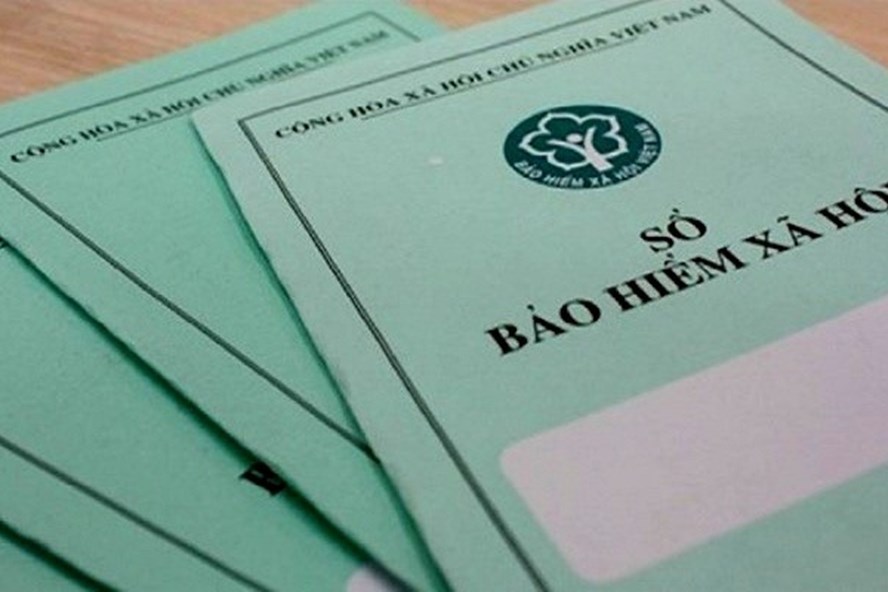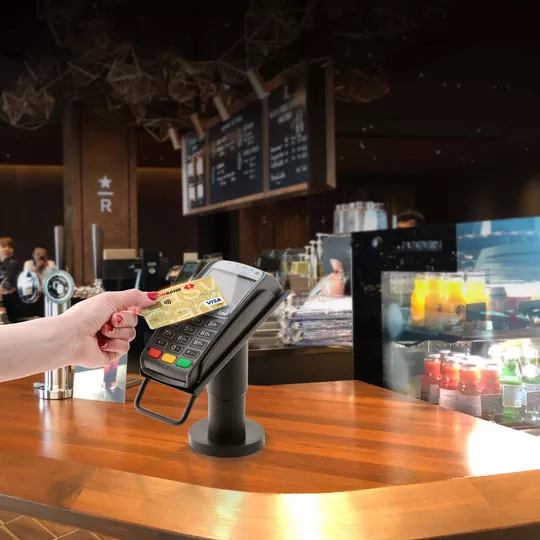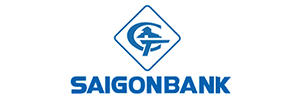
According to the goals set by the Government, by 2020, the rate of non-cash payment must account for more than 30% of the total means of payment in Vietnam. Conversion of magnetic cards to chip cards with safer security technology is a must. The conversion from magnetic stripe to chip card is being implemented by banks “racing” and the goal of 100% conversion by the end of 2021 is entirely feasible.
Converting domestic payment cards from magnetic cards to chip cards is one of the key solutions of the banking industry approved by the Prime Minister in the Project on developing non-cash payment for the period 2016-2020 (Decision Decision 2545 / QD-TTg). Following the Prime Minister’s instructions, based on the current laws and regulations on standards and technical regulations, on October 5, 2018, the Governor of the SBV signed the Decision No. 1927 / QD-NHNN announced Basic set of standards on domestic chip cards; It details the technical requirements of domestic payment cards in Vietnam using contactless and contactless chip technology, compatible with international EMV standards. Next, the SBV Governor issued Circular No. 41/2018 / TT-NHNN dated December 28, 2018, stipulating the roadmap for converting bank cards to cards in compliance with the basic standards for domestic chip cards; Accordingly, the conversion schedule for card payment organizations is until December 31, 2020 and for card issuers as of December 31, 2021.
Domestic chip cards fully meet the technical factors of safety and security according to EMV international standards, limiting risks of fraudulent frauds in card payment, ensuring payment security for customer; serve as an important platform for integrating and applying for non-cash payment services and services for services such as health, education, transportation, insurance and public services. The use of domestic chip card payment with contactless technology for small value transactions will bring a new experience to customers when just one touch of the card to the POS machine can be completed. deal. Issuing banks will set a threshold of payment value without customer authentication for small value transactions.
Currently, Vietnam has 48 domestic card issuers with a total of about 76 million cards, more than 261,000 POS and 18,600 ATMs; most of the POSs have followed the EMV Standard, so deploying local chip cards on devices that accept cards will not be too complicated. According to the plan, by December 31, 2019, commercial banks will convert at least 30% of cards from domestic, 35% of ATM and 50% of existing POS to chip technology. exposed and not exposed. All ATMs and POS on the market ensure compliance with VCCS Standard on 12/31/2020. By December 31, 2021, all domestic cards in circulation of card issuers comply with TCCS on domestic chip cards.
After more than half a year of launching with 7 participating banks, by the end of 2020 the number of banks willing to convert magnetic cards to chip cards has increased to 20. 7 banks participating in the first phase include Vietcombank, VietinBank, BIDV, Agribank, Sacombank, TienphongBank and An Binh, with ATM cards accounting for about 70% of the total number of cards nationwide. General Director of Vietnam National Payment Joint Stock Company (Napas) Nguyen Quang Hung said that by the first quarter of 2020, not only will stop 20 banks and 6 chip card suppliers, but it will reach 26 banks. goods, 10 companies supply chip cards.
According to statistics of the State Bank, by the end of September 2019, the number of cards circulating nationwide was 96.4 million cards with 36 issuers, many different card brands in which, domestic debit cards accounted for overwhelming over 90% of the total circulation card.
According to the roadmap outlined in Circular No. 41/2018 / TT-NHNN, by the end of 2019, 30% of ATM cards in the market (equivalent to over 25 million ATM cards) will have to be converted to chip cards, 35 % of ATMs, 50% of card acceptance devices (POS) at points of sale are in compliance with the local standard on chip card standards; the deadline is December 31, 2021 to convert 100% of domestic cards to chip cards, equivalent to all 75 million ATM cards being converted to chip cards.
With normal ATM cards, users are required to enter a pin on POS when making payment. As for the chip card, users only need to scan through the touch screen of the POS machine to be able to pay. Each chip on the card is like a device that stores and signals. Switching from magnetic stripe cards to chip cards not only limits the crime of stealing card data to create fake cards to withdraw money, but it will also significantly increase the number of customers, which is the basis for promoting the service. develop cashless payments.
According to Deputy Prime Minister Vu Duc Dam, doing well will boost the digital economy. Because chip cards are a multipurpose application on top of which, in addition to payment and financial services, it is possible to apply more connections with other economic sectors to bring multiple applications into technology such as transportation, health insurance, social insurance …
Vietcombank Deputy General Director Dao Minh Tuan said that in May 2019, Vietcombank officially launched domestic chip cards and the goal in 2019 is to convert 30% of the number of domestic chip cards, 30% of ATMs and 50%. % of units accepting POS cards. “Vietcombank currently has about 14 million domestic debit cards circulating in the market, so the conversion cost is huge but in the first phase of conversion we will give it to customers free of charge. For long-term goals, Vietcombank pledged to comply with the State Bank’s regulations on completing 100% conversion of Vietcombank’s domestic cards to chip cards by December 31, 2021 ”.
According to Deputy General Director of ACB Tu Tien Phat, each year ACB plans to spend about VND 400-500 billion on technology, including new trends such as payment and electronic wallets. Currently, 100% of ACB’s ATM systems accept this new card.
ABBank General Director Pham Duy Hieu said: “The investment in a new and modern payment system requires the bank to spend a lot of money on infrastructure, card management systems and equipment systems to accept. However, with the general trend of the global digital economy as well as the implementation of the guidance of the State Bank, we set a goal by mid-2020 to convert 100% of magnetic cards to chip cards. ”
According to Deputy Governor of the State Bank Nguyen Kim Anh, the bank will have to calculate in accordance with its business goals. To compete, banks need to minimize the costs incurred for customers. If any bank charges a high fee, the competitiveness will decrease. The State Bank only provides guidance on the conversion roadmap, as well as technical requirements, basic standards for domestic chip cards …
“The embryo cost of chip cards alone is 7-8 times higher than the embryo costs of magnetic stripe cards. That is not taking into account other costs, but we have considered some free programs for old customers in the period. In the next stage, depending on the policies of the State Bank as well as the goals of the bank, we will have policies to create the best conditions for our customers “- General Director of TPBank Nguyen Hung said.
The set of domestic chip card standards includes contactless and contactless domestic payment card technical specifications, compatible with EMV international standards, so it will support banks to make the conversion effectively. due to the succession of an international card issuance and acceptance infrastructure that is now compatible with the existing EMV. Banks can choose to deploy dual interface cards (both contactless and contactless) in the first phase, reducing a conversion route from the contact chip card to the chip card. No exposure like lessons learned from other countries.
The domestic chip card set of standards is a basic platform for digitizing card information on mobile devices, eventually allowing users to use their smartphones for payment. In the future, the market will receive the “touch” payment trend, customers only need to touch the card or phone to the device to accept POS to complete the payment transaction.
(Source: Securities Times)
Tin tức khác

NAPAS và Vietbank ra mắt thẻ trả trước nội địa có tính năng thanh toán không tiếp xúc trong giao thông
Ngân hàng Việt Nam Thương Tín (Vietbank) và Công ty Cổ phần thanh toán Quốc gia Việt Nam (NAPAS) vừa chính thức ra mắt thẻ trả trước nội địa Vietbank NAPAS. Đây là dòng thẻ trả trước nội địa có gắn chip do Ngân hàng Vietbank phát hành có tính năng thanh toán không tiếp xúc trong giao thông đa ứng
Xem chi tiết
Dịch Covid-19 ảnh hưởng thế nào đến ngành công nghệ toàn cầu?
Virus Corona chủng mới gây dịch Covid-19 đang giáng một đòn nặng vào nền kinh tế toàn cầu với hậu quả cực kỳ nghiêm trọng, vượt xa các trận dịch trước đây. Năm 2003, khi đại dịch SARS bùng phát ở Trung Quốc rồi lan ra cả thế giới (làm 8.096 người nhiễm bệnh và gây tử vong cho 774 người) đã làm
Xem chi tiết
All 6 types of papers are about to change, the people of the country benefit
In the coming time, it is expected that there will be a “revolution” involving a series of important papers for each citizen – a new step in the efforts to reform administrative procedures of the authorities. permission. 1. Identity of the citizen attached to the chip The Law on Citizen’s Identity stipulates that, starting from
Xem chi tiết
VIETCOMBANK TRIỂN KHAI TÍNH NĂNG BẢO MẬT 3D SECURE CHO THẺ GHI NỢ QUỐC TẾ
Nhằm tăng cường bảo mật khi thanh toán trực tuyến bằng thẻ, từ ngày 01/10/2019, Vietcombank chính thức triển khai tính năng bảo mật 3D Secure cho thẻ ghi nợ quốc tế. Như vậy đến nay, Vietcombank đã triển khai 3D Secure cho tất cả các sản phẩm thẻ tín dụng và ghi nợ quốc tế mang các thương hiệu Visa/Mastercard/Amex/JCB
Xem chi tiết
Thanh toán thẻ ghi nợ không tiếp xúc tăng trưởng mạnh
Sự phổ biến của thanh toán không tiếp xúc đã thúc đẩy giá trị giao dịch thẻ ghi nợ tăng 18,5% trong tháng 12 – tháng mua sắm cao điểm mùa cuối năm. Thông số thống kê từ Ngân hàng Trung Ương cho thấy các giao dịch thẻ ghi nợ tại các điểm bán PoS đã
Xem chi tiết
Nam A Bank put IA robot and artificial intelligence into the transaction
Nam A Bank has officially launched a digital transaction space integrated with modern equipment ecosystem, especially the application of artificial intelligence (AI) to enhance customer experience on 12/12. Here, Nam A Bank also “launched” Robot OPBA and became the pioneer Vietnamese bank to bring robots to serve customers. For the first time in Vietnam, customers
Xem chi tiết







